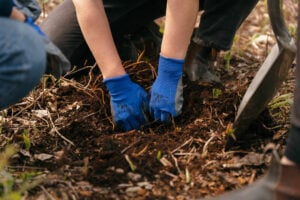Richard Louv wants you to close this article and go outside. Right now. If you have any, take your kids. When the term “nature-deficit disorder” first appeared in his 2005 book Last Child in the Woods: Saving Our Children from Nature-Deficit Disorder, the concept began stirring up an international movement to connect children, families and whole communities with the natural world — a critical ingredient in healthy human development and for our emotional and psychological well-being. Since then, he’s co-founded the international Children & Nature Network and penned more influential books, the most recent being Our Wild Calling: How Connecting with Animals Can Transform Our Lives — and Save Theirs. Here, he discusses this work and what’s changed since Last Child.
On why it was time to write Our Wild Calling
In the introduction to the book, I describe an encounter with a black fox on a trail on Kodiak Island in Alaska. For me, those moments have an unexpected transformational quality — time seems to stop. I recall similar moments with other animals — deeply meaningful relationships with a dog and other animals. And in pursuit of the mysterious power of such experiences, I have asked friends, colleagues, and strangers of different ages and cultures and professions — including scientists, psychologists, theologians, trackers, teachers, physicians, traditional healers and one polar explorer — to share their stories. I was curious about the impact of these experiences on the storytellers and their psychological, physical and spiritual health, including their relationships with members of their own human families.
I should add that this book extends my prior books on the human relationship with nature. In Last Child in the Woods, I introduced the concept of “nature-deficit disorder.” That is not a medical diagnosis, but a way of introducing a conversation about the unprecedented disconnection between human beings and the natural world, and what that disconnect means for the future of our children, ourselves and the planet. But the majority of the research focuses on green environments, because surprisingly little research has been done on the therapeutic impact of wild animals on human health and well-being, and I hope this book stimulates more appreciation of how wild animals shape us and how we shape them. This is particularly important as people and wild animals live in increasingly close proximity, including in our cities.
On how childhood today differs from his own experience
I grew up in Missouri and Kansas and spent many, many hours in the woods at the edge of our housing development, with my dog. I built tree houses and dug underground forts and collected snakes and turtles.
Technology now dominates almost every aspect of our lives. In and of itself, technology is not the enemy, but the lack of balance in our schools and lives, I believe, can be lethal. In addition, much of society (including too many members of the education establishment) no longer sees independent, imaginary play in natural settings as “enrichment.”
I’m hopeful that the culture is beginning to move in a different direction, though. We’re seeing new appreciation for these issues among parents, educators, pediatricians, mayors and others. And we’re seeing some strong countertrends — such as the growth of nature-oriented schools.
On what’s changed since Last Child was published
The barriers between people and nature remain challenging. But we’re seeing some change. In the U.S., we’re beginning to see progress among state legislatures, schools and businesses, civic organizations and government agencies. Family nature clubs are proliferating.
Regional campaigns are bringing people from across political, religious and economic divides to connect children to nature as well. In September 2012, the World Congress of the International Union for the Conservation of Nature (IUCN) passed a resolution titled “The Child’s Right to Connect with Nature and to a Healthy Environment.” This connection is, indeed, a human right, and the acknowledgement of that is progress. We now need to move more quickly into a mode of greater action, which goes beyond awareness, both at the family and the community level.






